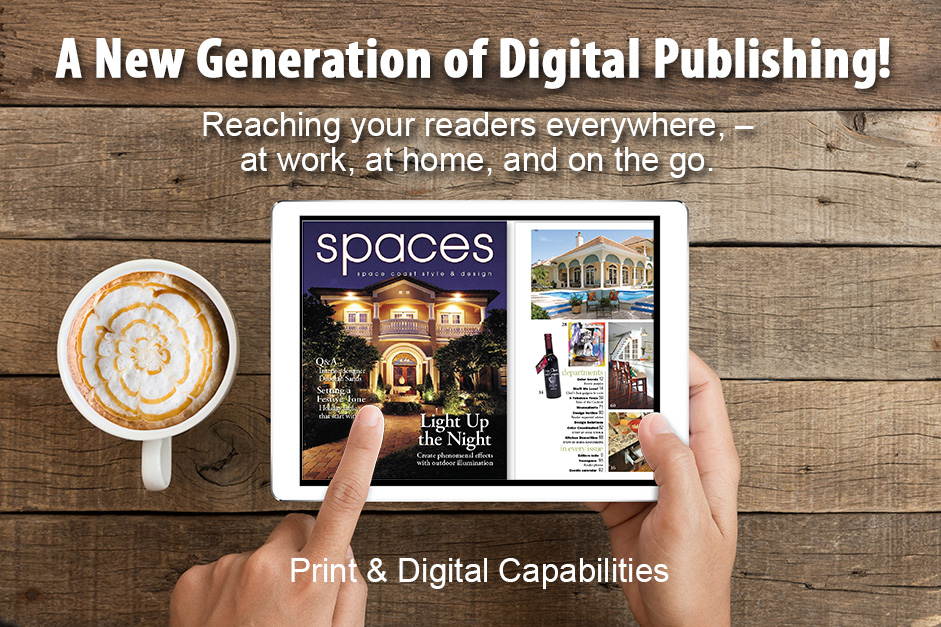
The last ten years have seen digital media advertising transform. It is now expected that digital media advertising will account 60% of global advertising expenditure by 2025. This shift from passive content consumption to more active experiences is a key component of this transformation. In the end, revenues have consolidated onto major technology platforms such as Google and Facebook.
Digital advertising is now more effective because of the use of real-time programmatic ads technology. This has helped to improve ad delivery while at the same time creating a more targeted experience for consumers. However, it has also contributed to a progressive concentration of revenues among Big Tech companies. Google is, in fact, the Competition and Markets Authority's (CMA) most dominant player within the digital advertising ecosystem.
The impact of data targeting techniques has also led to an increase in advertising images. While this may sound like a good thing, it is worth noting that the use of such techniques is not a panacea. A complex bidding process makes it difficult to measure the effectiveness of ads.

Advertising is shifting to social media channels because more people are accessing the internet from their mobile devices. To reach a wider audience, advertisers are using third-party placements like pop-up ads.
The future of digital media is uncertain, even though digital advertising is developing at an ever faster pace. For now, it is necessary to map the digital ecosystem and identify key players in your local market.
Before a business decides to invest in digital media technology, it needs to first identify its goals. These should include a number of quantity and quality measures. Reviews, registrations/subscriptions, and sales are all important KPIs if the goal is to increase engagement. A brand's personality is key to a landing page that converts.
A communications brief should be given to all involved parties, including advertising agencies. It should stress the importance to engage with customers and target audience, and challenge media agencies on how to find the best channels. Ideally, the brief should involve a meeting with the media sales team.

An important aspect of any communications brief includes a clearly defined media planning process. By having a clearly defined process for your agency, you can ensure your media buys are both profitable and will help your company achieve its goals.
Ultimately, the most successful digital media advertising strategy involves a combination of quality and quantity. The most important thing is to choose media that causes enough changes in consumers' behavior to increase sales. This might mean using display ads in order to influence online shoppers. Or using social media to reach relevant consumers. It doesn't really matter what the media strategy may be, it will still need regular monitoring and review.
The impact regulation has on digital media advertising is crucial. The proliferation of privacy concerns has had an adverse effect on digital media advertising. Regulatory considerations may have a significant impact upon the ecosystem.
FAQ
Why use social media for advertising your business?
Social Media Marketing allows you to reach customers right where they are, via social networks like Facebook, Twitter, LinkedIn and YouTube. You can also target specific audiences within these networks by using keywords.
Because it is cheaper to market online than traditional advertising methods, this advertising method is more cost-effective. This allows you to establish strong relationships with current and future clients.
It's simple to begin using social media to promote a business. All you need is a computer or smartphone and access to the Internet.
What is advertising's main purpose?
Advertising is more about connecting with customers than just selling products.
Advertising is about communicating values and ideas to people who are interested in your products or services. Advertising is about changing people's minds and attitudes. It's all about building relationships.
It's all about making people feel good about themselves.
If you don't understand your customers' needs, you can't market to them.
You must first get to know your customer before you can start advertising projects.
Then you can design ads that will resonate with them.
Advertising: What is it?
Advertising is an art. Advertising is more than selling products. It's about building emotional bonds between brands and people.
Advertising is about communicating ideas through images and stories.
It is important to communicate clearly and persuasively. Your target market should be able to relate to the story you tell.
Advertising is thus different from other forms, such public speaking, writing, and presentations.
A successful ad campaign is a way to establish a brand identity.
And this is how you become memorable. You become someone who people want to remember.
How can I select my target audience?
Start with yourself and those closest to your heart. Do you not know where to start? Ask yourself "Whom do I want to reach?"
Ask yourself these questions. Who are the most influential people within my industry? What problems do they have to deal with every day? What are their top talents? You can find them online.
Go back to the beginning when you started your business. Why did your start? What problem did you solve for yourself, and how did you do it?
These answers will help to identify your ideal clients. You'll also learn more about what makes them tick and why they buy from you.
You can also look at your competitors' websites and social media pages to find clues about whom they cater to.
Once you identify your target customers, then you must decide which channels to use to reach these people. For example, if your company provides services to real estate agents, you might create an informational website targeting home buyers.
If your company provides software to small businesses, you might consider creating a blog for those owners.
If you sell clothing, you could create a Facebook page for teens. A Twitter account could be set up by restaurant owners to allow parents to search for places that are kid-friendly.
You have many options to convey your message.
What are the basics of print advertising?
Print advertising is a good medium to communicate effectively with consumers. Print advertising is used extensively by companies to promote their products or services. The main goal is to catch the attention and buy from the consumer.
Print ads are usually one page in length and can include text, images and logos. They can also include sound and animation as well video and hyperlinks.
These are the main types of print ads:
1. Brochures - These are large format printed pieces designed to attract people into stores. Brochures are filled with eye-catching designs, colorful pictures, and attractive graphics.
2. Catalogues – These are smaller versions to brochures. They are typically sent to customers who have requested information on specific items.
3. Flyers – These are tiny pieces of paper distributed at events like concerts or fairs. Flyers can be handed out at retail outlets for a small fee, but are generally free.
4. Flyers are also available in posters. They can be displayed on fences, walls, or buildings. They are usually made using computer software programs, which is designed to draw the eye of passersby.
5. Direct mail - This refers to letters or postcards mailed directly to potential customers. Companies send these out periodically to remind existing customers about their business.
6. Newspaper Ads - These advertisements are found in newspapers and magazines. They are usually very long and contain text and images.
What are the basics of internet advertising?
Internet advertising is an important part of any business strategy today. It is a cost-effective way for companies to reach potential customers. There are many options for internet advertising. Some are free while others may require payment.
You can also advertise online using banner ads, pop up ads, search engine optimization, pay-per-click advertisements (PPC), social media marketing (e-mail marketing), and mobile marketing. Each method has its pros and cons.
How much does it cost for social media advertising?
It is important to know that advertising on social media platforms is not free if you decide to do this route. You'll be charged monthly according to how long you spend on each platform.
Facebook: $0.10 per 1,000 impressions
Twitter: $0.20 per 1,000 impressions (if your tweet is on Twitter)
Linkedin - $0.30 per 1,000 impressions if you send out invitations
Instagram - $0.50 per 1,000 impressions.
Snapchat - $0.60 Per 1,000 Impressions ($0.40 per User)
YouTube - $0.25 Per 1,000 Views
Tumblr – $0.15 per 1000 impressions for text postings
Pinterest - $0.05 per 1,000 impressions per month
Google + - $0.15-$0.20 per 1 million impressions
Tumblr- $0.15-$.20 for 100,000 impressions
Vimeo - $0.20- $0.25 per 10,000 impressions
Soundcloud - $0.20 - $0.0.25 for 1,000,000 plays
StumbleUpon - $0.20 -$0.25 per 1 billion pageviews
Digg - $0.20 - $0.25 per 1000 diggs
Reddit - $0.20-$0.25 per 1000 comments
Wordpress - $0.20 to-$0.25 for 500 comments
Flickr - $0.20 -- $0.25 per 5,000 photo uploads
Statistics
- Advertising spending as a share of GDP was about 2.9 percent. (en.wikipedia.org)
- Nonetheless, advertising spending as a share of GDP was slightly lower – about 2.4 percent. (en.wikipedia.org)
- Google will display whichever ad type (CPM or CPC) is expected to earn more revenue for the publisher, which is in Google's best interest since they take a 32% share of the revenue. (quicksprout.com)
- It collects money from the advertisers, keeps 32% for its role in facilitating the process, and the remaining 68% goes to the publisher (you). (quicksprout.com)
External Links
How To
How to put ads on your website
Ads are an essential part of any business. They enable you to reach new customers and keep them coming again.
You can also promote your products or services with ads without spending money on advertising.
Google Adsense lets you display text and images advertisements on your site, blog, forum or other online content.
Google Adsense allows you to earn revenue from each click on ad links displayed on your site. You don't have to write any code to set up your ads.
To get started, just sign up for a free account at www.google.com/adsense. Follow these steps to get started:
-
Create your ads using the Ad Builder tool. You can create a variety of ads with the Ad Builder tool, including text ads, images, videos, and interactive ads.
-
Once you have created your ads you will need to upload them into your AdSense account. Select "Upload" from the "My Ads” section of the left-hand menu bar.
-
Next, include keywords related to the product or service you are advertising so that it appears in search results for your specific niche.
-
Finally, copy and paste your ads into the appropriate areas of your website. After all these steps are completed, your ads should be automatically added to your site.
-
If visitors click on one your ads, they will be taken to another page where they may purchase your products or services.
-
Every time someone clicks one of your AdSense ads, you earn earnings.
-
Go to the My Account tab, located at the top of the AdSense dashboard. There you will find reports detailing the performance of your ads.
-
Your earnings can also be downloaded as a CSV.
-
If you wish to increase your earnings, make adjustments to your ads.
-
Finally, you can pause or delete your ads at any time.
-
For any questions or concerns, you can contact us.